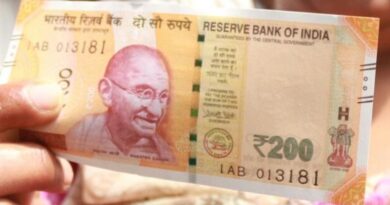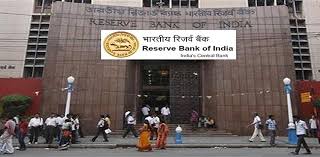How Forex reserves helping Indian Economy : IE
Forex reserves at all-time high — why did this happen, and what does it mean for India’s economy?
The current situation stands in stark contrast to 1991, when India had to pledge its gold reserves to stave off a major financial crisis. In March 1991, India had forex reserves of a mere $5.8 billion; today, the country can depend on its soaring foreign exchange reserves to tackle any crisis on the economic front.
Via George Mathew , Sandeep Singh , Indian Express
India’s foreign exchange (forex) reserves surged by $3.883 billion to touch a lifetime high of $541.431 billion in the week ended August 28, Reserve Bank of India (RBI) data showed on Friday (September 4). India’s forex reserves had crossed $500 billion for the first time ever in the week ended June 5, 2020, hitting what was then the all-time high of $501.7 billion.
The current situation stands in stark contrast to the one in 1991, when India had to pledge its gold reserves to stave off a major financial crisis. In March 1991, India had forex reserves of a mere $5.8 billion; today, the country can depend on its soaring foreign exchange reserves to tackle any crisis on the economic front.
While the overall situation on the economic front is gloomy, with India’s Gross Domestic Product (GDP) growth having contracted 23.9 per cent in the April-June quarter, and manufacturing activity and trade at standstill, the stock of forex reserves is one data point that India can cheer about amidst the Covid-19 pandemic.
What are forex reserves?
Forex reserves are external assets in the form of gold, SDRs (special drawing rights of the IMF) and foreign currency assets (capital inflows to the capital markets, FDI and external commercial borrowings) accumulated by India and controlled by the RBI.
The International Monetary Fund says official foreign exchange reserves are held in support of a range of objectives like supporting and maintaining confidence in the policies for monetary and exchange rate management including the capacity to intervene in support of the national or union currency.
It also limits external vulnerability by maintaining foreign currency liquidity to absorb shocks during times of crisis or when access to borrowing is curtailed.
Why are forex reserves rising despite the slowdown in the economy?
The major reason for the rise in forex reserves is the rise in investment in foreign portfolio investors in Indian stocks and foreign direct investments (FDIs). Foreign investors have acquired stakes in several Indian companies over the past several months.
After pulling out Rs 60,000 crore each from debt and equity segments in March, Foreign Portfolio Investments (FPIs), who expect a turnaround in the economy later this financial year, have now returned to the Indian markets.
On the other hand, the fall in crude oil prices has brought down the oil import bill, saving precious foreign exchange. Similarly, overseas remittances and foreign travels have fallen steeply.
The sharp jump in reserves started with Finance Minister Nirmala Sitharaman’s announcement on September 20, 2019, cutting corporate tax rates.
What’s the significance of rising forex reserves?
The rising forex reserves give comfort to the government and the RBI in managing India’s external and internal financial issues at a time of major contraction in economic growth. It serves as a cushion in the event of a crisis on the economic front, and is enough to cover the import bill of the country for a year.
The rising reserves have also helped the rupee to strengthen against the dollar. The foreign exchange reserves to GDP ratio is around 15 per cent.
Reserves will provide a level of confidence to markets that a country can meet its external obligations, demonstrate the backing of domestic currency by external assets, assist the government in meeting its foreign exchange needs and external debt obligations and maintain a reserve for national disasters or emergencies.
What does the RBI do with the forex reserves at its disposal?
The Reserve Bank functions as the custodian and manager of forex reserves, and operates within the overall policy framework agreed upon with the government.
The RBI allocates the dollars for specific purposes. For example, under the Liberalised Remittances Scheme, individuals are allowed to remit up to $250,000 every year.
The RBI uses its forex kitty for the orderly movement of the rupee. It sells the dollar when the rupee weakens and buys the dollar when the rupee strengthens. Of late, the RBI has been buying dollars from the market to shore up the forex reserves.
When the RBI mops up dollars, it releases an equal amount in rupees. This excess liquidity is sterilised through the issue of bonds and securities and LAF operations.
“Despite the global dollar weakness, the RBI does not seem to be keen to step off the gas as far as reserve accumulation is concerned… the sentiment in the rupee has been skewed by incessant dollar purchases by the central bank to strengthen its balance sheet,” Abhishek Goenka, CEO, IFA Global, had said earlier.
Where are India’s forex reserves kept?
The RBI Act, 1934 provides the overarching legal framework for deployment of reserves in different foreign currency assets and gold within the broad parameters of currencies, instruments, issuers and counterparties.
As much as 64 per cent of the foreign currency reserves are held in securities like Treasury bills of foreign countries, mainly the US; 28 per cent is deposited in foreign central banks; and 7.4 per cent is deposited in commercial banks abroad, according to RBI data.
India also held 653.01 tonnes of gold as of March 2020, with 360.71 tonnes being held overseas in safe custody with the Bank of England and the Bank for International Settlements, while the remaining gold is held domestically.
In value terms (USD), the share of gold in the total foreign exchange reserves increased from about 6.14 per cent as at end-September 2019 to about 6.40 per cent as at end-March 2020.
Is there a cost involved in maintaining forex reserves?
The return on India’s forex reserves kept in foreign central banks and commercial banks is negligible — analysts say it could be around 1 per cent, or even less than that, considering the fall in interest rates in the US and Euro zone.
There was a demand from some quarters that forex reserves should be used for infrastructure development in the country. However, the RBI had opposed the plan. Several analysts argue for giving greater weightage to return on forex assets than on liquidity thus reducing net costs if any, of holding reserves.
Another issue is the high ratio of volatile flows (portfolio flows and short-term debt) to reserves which is around 80 per cent. This money can exit at a fast pace. There are some differences among academics on the direct as well as indirect costs and benefits of the level of forex reserves, from the point of view of macro-economic policy, financial stability and fiscal or quasi-fiscal impact, former RBI Governor YV Reddy said in one of his speeches.
Source : The Indian Express



